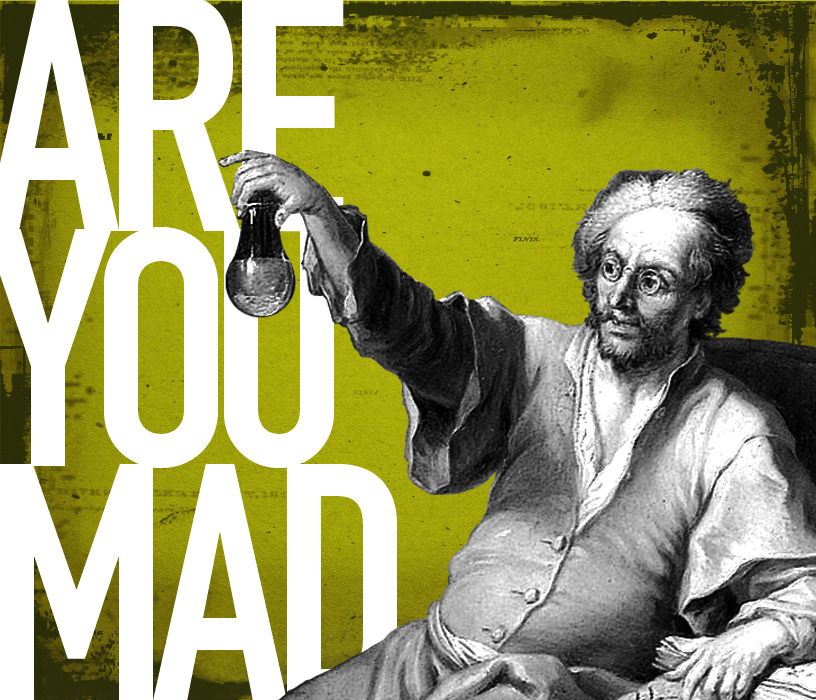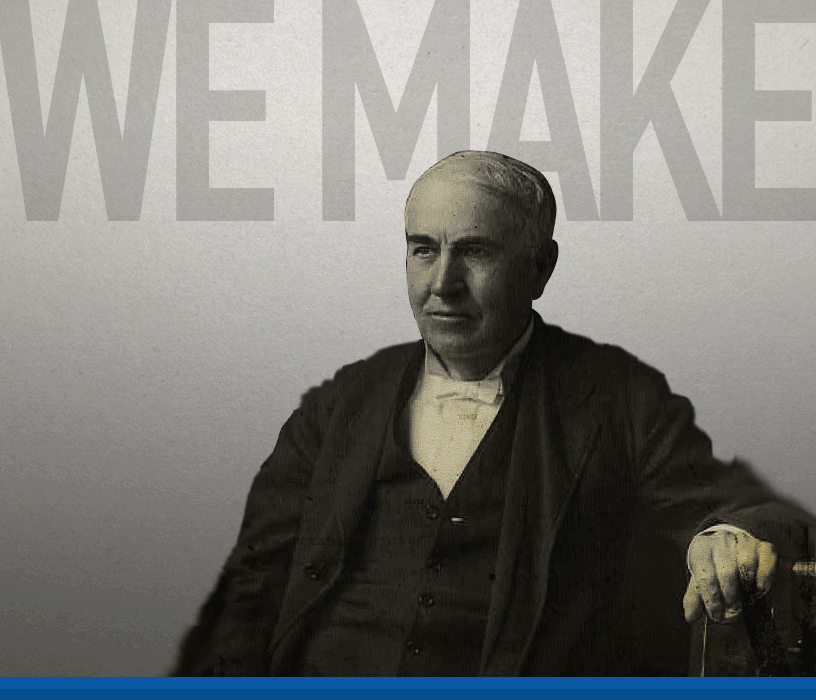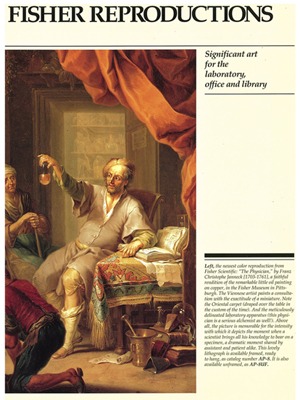The Brief
The product management team for the “house brand” at Fisher Scientific came to our agency looking to increase the “share of wallet” for Fisherbrand (i.e. switch customers’ purchases of “name brand” products to house brand equivalents). Why would Fisher Scientific care which products you buy, as long as you’re buying that product from Fisher Scientific? In short, because you’ve eliminated the “cut” of the purchase price to the name brand company, like Nalgene or Corning, the profit margin is obviously quite a bit higher for those house brand products. So it clearly serves the business’ bottom line to convert its existing customer’s purchases to include more house brand products. However, the team of sales associates at Fisher Scientific did not share this vested interest in selling the house brand. Their commission was based on a flat percentage of total sales, non-contingent upon which brand of products they sold. Of course, my first recommendation was to offer a higher commission percentage on house brand products. A short conversation with the executive level put the brakes on that idea: we could not offer any direct incentives to our sales force that favored our product line over those of our affiliates, at the risk of alienating or further complicating those relationships. We could offer additional training to the sales force, but ultimately, this battle had to be won in the hearts and minds of our end-users.

The Result
“This is my favorite thing you’ve ever done here. Ever.” — Beth Mislanovich, Marketing Communication Manager
To illustrate this business case, consider this everyday analogy
You walk into a Target store to stock up on a few home essentials: paper towels, garbage bags, dish soap… Faced with a dizzying selection, which brand will you choose? Based on what the TV commercials tell you, Brawny sets the gold standard here… or was that Bounty? But here’s Target’s house brand: Up and Up. Conventional wisdom tells you that the house brand should cost significantly less, so you reach for it. For most people, this is where the deliberation ends, but if you’re a careful shopper, you’ll notice that the price of the house brand is actually comparable to the name brands. Hey, what gives?! Target stores are unique in this way: they have bucked the conventional wisdom that dictates that house brand products should cost significantly less than the name brand, ostensibly sacrificing quality and performance for the low price point. Instead, by meticulously cultivating a “high-end” brand identity, Target has actually succeeded in positioning itself as an aspirational lifestyle brand — no small feat for a big box store — and the halo effect from this phenomenon reaches all the way out to its private label products. That halo effect ultimately means that, on some arguably subconscious level, Target’s core customer base will feel pride in displaying products that telegraph her status as a Target shopper, elevating her above the perceived indignity and political baggage of shopping at Wal-Mart, and cementing her firmly into the upper-middle class by virtue of her preferred shopping destination. With punchy colors and a minimalist design aesthetic, Up & Up product packaging more closely resembles the look and feel of consumer electronics than that of its competition on the store shelves. This choice having been made once, and the product’s quality and performance having met or exceeded the customer’s expectations, the customer is likely to habitually return to the same brand, again and again. Amazingly, by virtue of the name on its label, a pack of paper towels has become an aspirational lifestyle product.
Turning a B to B company’s off-brand into a lifestyle brand…
It’s usually not the chosen direction — typically, B to B marketing targets the purchasing agent by emphasizing price and convenience — the product’s end user is often insulated from the purchasing department, and is therefore assumed to be uninvolved in the purchasing decision-making process. However, this tenet of “Marketing 101” was problematic due to a subtle distinction: the business goal was not to capture new customers, but to retain existing ones while converting their typical spend to a new product line. By shifting the focus away from increasing the number of shoppers or the size of their baskets (resulting in an increased total spend), we became B to C product advocates. This begs the question: can you make research scientists care about brand loyalty on a visceral, personal level? I have to think that you can, if computer programmers and graphic designers can craft their entire sense of self based on whether they use an Apple, Windows, or Linux product. We just had to tap into the heart of what scientists want for themselves, and from a brand that purports to understand them.
My first stab: the ultimate bandwagon marketing approach
Flavor text
We don’t just manufacture products; we make partnerships, progress, headlines, history. Trust isn’t manufactured — it’s earned. Our knowledge. Our experience. Our research. Our brand. Fisherbrand. — Fisher Scientific customers include: Thomas Edison, Henry Ford, E.R. Squibb, US WWII Military, The Manhattan Project, Dr. Salk, Dr. Leroy Hood Great minds think alike. What will you discover with Fisherbrand? — Where there was darkness, Thomas Edison created light. Where there was unrest, the Manhattan Project created strength. Where there was illness, Jonas Salk created well-being. Wherever science is tackling problems, Fisherbrand is creating solutions. — When he mapped the human genome, Dr. Leroy Hood filled in the blanks, and Fisherbrand filled up his shelves.

Call it a cheap ploy or an obvious stroke, but when I set out to build a community of brand advocates, my first play was to invoke the great Fisherbrand customers of the past. Just by mentioning that Thomas Alva Edison purchased glassware from Fisherbrand, you are communicating a fair amount of information. At the very least, most customers have no concept of the breadth of the product offering available through the Fisher Scientific house label — just listing a variety of products offered is an effective, educational tactic. Secondly, in mentioning the fact that the brand has been around for over a century, we convey a sense of stability. Of course, there is no greater testament to the quality of Fisherbrand products than a celebrity endorsement by the most famous inventor in recorded human history. The tagline, “We make science,” was a bold statement. More than just making products, Fisherbrand’s product team was an advocate to you, a squire in your quest to make the world better, by helping your lab to anticipate needs and potential problems, navigate complex regulations, and overcome other obstacles along the way. It also opened up the opportunity for a great public dialog. We make science. What do you make? By opening this question to our customers via merchandise, social media, and on the web site, we stood to create a fun and vibrant community of people, from the earnest and literal to the cheeky and ironic. This outlet for personal expression by our customers opened up a direct line of communication to our product team, where we could provide instantaneous customer service, mine for sentiment analysis, and plant the seeds of brand loyalty. So why didn’t we go with it? It was prohibitively expensive. The use of the likeness of Thomas Edison, or any of the other famous scientists who had been Fisherbrand customers in the past, would require the licensing of rights-managed images, and would amass astronomical costs, far beyond our allotted budget. We had hit another wall, so now what?
How could I build a community and create exciting visual materials without any rights-managed images?
Some days, creative inspiration is sitting at the back of the bottom drawer of an ancient steel filing cabinet.

I was rifling through the literature archives when I found a weird old brochure. It caught my eye simply because it didn’t make any sense in the context of the product-centric literature archives. I did some digging, and discovered that one of the Fisher family sons took to collecting science-related artwork. He bought a dozen paintings like the one you see on the cover of this brochure, selling prints at-cost to schools and other learning institutions. I didn’t put two and two together immediately, but when I did, it was like a lightning bolt. I could see it coming together in my mind right away — I could use these funky, fusty old scientists in new marketing materials. Vintage etchings had already been used in a modern context for materials like the ever-popular “some-e-cards,” and so with the right concept and design, they could make for a fun, even edgy campaign. And best of all, we flat-out owned the rights to reproduce these images into perpetuity. I created some new body copy for flavor, and presented a campaign concept that leveraged the old (Fisherbrand’s longevity) alongside the new (providing cutting-edge technology and relevant industry knowledge).

In science, there is no room for complacency. If you are satisfied with the status quo, if you have no strong opinions, if you are generally disinterested, take your if-it-ain’t-broke-don’t-fix-it business elsewhere. If you play the devil’s advocate, look for loopholes, challenge authority, ask for trouble, aim high, question the obvious… if you’re a mad scientist, we’re here for you.